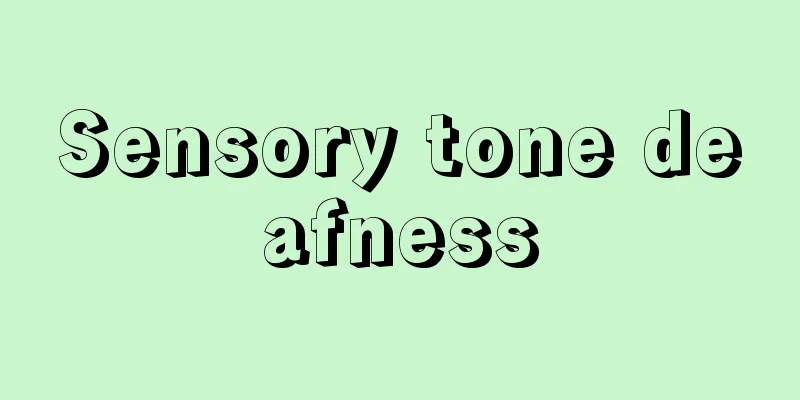Prison reaction

|
When a person in custody shows mental and behavioral symptoms closely related to the conditions of detention, it is called a detention reaction. This includes detention in the military or in a detention camp, but in the field of forensic psychiatry, it mainly refers to detention in a holding house, detention center, or prison. The mental and behavioral symptoms vary in both severity and appearance, from those that remain at the level of neurosis, to those that correspond to what Kretschmer, E. calls primitive reactions or personality reactions, to those that can be called psychogenic reactive psychosis. When they remain at the level of neurosis, they are sometimes called institutional neurosis. Symptoms include various physical complaints, autonomic nervous symptoms, insomnia, anxiety, and restlessness. In particular, elderly people who have been detained for long periods of time are likely to have fear of illness and a sense of isolation and helplessness. This is because they lack connections with the outside world and tend to lose their social roles. This is the basis for prisonization. Prisonization is nothing more than a process in which inmates become overly identified with the prison's specific subculture and roles within the prison, thereby closing off hope for the future. Primitive reactions are cases where the whole personality is not trapped between the experiential stimulus and the reactive behavior, and include explosive reactions and short-circuit reactions. In an explosive reaction, the strong emotions caused by the experiential stimulus are not suppressed, but are simply released as they are, which tends to take the form of a motor outburst and is accompanied by memory loss. In addition, the patient may not respond to interventions and may become mute and immobile, or may even lose control of his/her urination. This symptom is called prison stupor or Raecke's stupor, named after J. Raecke. In some cases, the patient may progress to Ganser syndrome, named after S.J. Ganser, whose main symptoms are irrelevant responses and pseudodementia. In contrast, short-circuit reactions result in actions that pass through a fragmented personality that is separated from the whole personality in response to the experiential stimulus. As a result, the actions take the form of somewhat more complex actions than explosive reactions, and may or may not be accompanied by memory loss. On the other hand, personality reactions are cases where the personality is involved in processing the experiential stimuli and the reactive behavior, resulting in a more complex form. Personality reactions include powerful reactions, helpless reactions, and autistic reactions, each of which shows symptoms such as delusions of suing, delusions of sensitive references, and delusional ideas. Furthermore, when the condition worsens to the level of prison psychosis, psychotic symptoms similar to schizophrenia can be observed. Conversely, the symptoms of the original psychosis of the prisoner may appear histrionic or changeable, and may be misdiagnosed as prison psychosis. This is called prison coloring. Many of the debates regarding custodial psychosis unfolded from the late 19th century to the early 20th century, and continue to this day. The main debate is whether it is possible to distinguish between psychosomatic illness, which is the manifestation of a desire to become ill, and true mental illness. If it is the former, the individual is treated as if they are malingering, even though they are ill. It is certainly important to distinguish between illness and malingering at the stage of psychiatric evaluation before the sentence is finalized, but for custodial reactions, including custodial psychosis that occurs after the sentence is finalized, psychotherapy and drug therapy that focus on the connection between personality, environment, and illness are necessary, rather than simply assuming that the individual is malingering. →Forensic Psychiatry [Takaoka Ken] Latest Sources Psychology Encyclopedia Latest Psychology Encyclopedia About Information |
|
拘禁下におかれた人間が,拘禁状況と密接に関連した精神-行動症状を呈するとき,それを拘禁反応とよぶ。軍隊や収容所などでの拘禁も含まれるが,司法精神医学の領域では留置場,拘置所,刑務所における拘禁が主である。精神-行動症状としては,神経症の水準にとどまるものから,クレッチマーKretschmer,E.のいう原始反応や人格反応に相当する水準のもの,心因性の反応精神病というべき水準に至るものまで,病像も重症度もさまざまである。神経症の水準にとどまる場合を,拘禁神経症institutional neurosisとよぶことがある。その症状としては,さまざまな身体愁訴や自律神経症状・不眠・不安・焦燥などが挙げられる。とりわけ長期に収容された高齢者では,病気への恐怖や孤立無援感が認められやすい。彼らは外部とのつながりを欠き,社会的役割を喪失しがちだからである。ここに,刑務所化prizonizationが生じる素地がある。刑務所化とは,刑務所固有の下位文化や刑務所内での役割に自らを過剰に同一化させた結果,未来への希望を閉ざしてしまう過程にほかならない。 原始反応primitive reactionとは,体験刺激と反応行為との間に全人格がはまり込んで働くことがない場合をいい,爆発反応と短絡反応が含まれる。爆発反応では,体験刺激によりもたらされる強い感情が抑制されず,単純にそのまま発散される結果,運動暴発の形を取りやすく,記憶欠損を伴う。また,働きかけにも反応せず無言無動を呈したり,失禁などまでが見られる場合もあり,このような症状は拘禁昏迷prison stuporまたはレッケRaecke,J.にちなみレッケの昏迷という。的外れ応答や仮性認知症を主症状とするガンザーGanser,S.J.M.にちなむガンザー症候群Ganser syndromeへと移行する場合もある。これに対して短絡反応では,体験刺激に対して,全人格からは分離された断片的人格を通過する行為がもたらされる。その結果,爆発反応に比較するとやや複雑な行為の形を取り,記憶欠損を伴うことも伴わないこともある。 一方,人格反応personality reactionとは,体験刺激と反応行為との間に人格が関与し加工がなされることにより,いっそう複雑な形を取る場合をいう。人格反応には,強力性反応,無力性反応,自閉性反応が含まれ,それぞれ好訴妄想,敏感関係妄想,妄想様構想などの病像を示す。さらに,拘禁精神病prison psychosisの水準にまで重症化すると,統合失調症に類似した精神病像が認められるようになる。逆に,被拘禁者が元来もっていた精神病の病像が,演技的あるいは易変的な見かけを取り,拘禁精神病と誤診されることもある。これを拘禁着色prison coloringとよぶ。 拘禁精神病に関する議論の多くは,19世紀末から20世紀初頭にかけて展開され,今日でも続いている。その主要な議論は,疾病への願望が形になって現われた心因性の疾患なのか,それとも真の精神病なのかを区別し得るかということである。前者であれば疾患であるにもかかわらず詐病であるかのように扱われる。たしかに刑が確定する前の精神鑑定の段階では疾病と詐病との鑑別は重要であるが,確定後に生じた拘禁精神病を含む拘禁反応に対しては,安易に詐病と決めつけるよりも,人格-環境-病像のつながりに着目した精神療法や薬物療法が必要になる。 →司法精神医学 〔高岡 健〕 出典 最新 心理学事典最新 心理学事典について 情報 |
Recommend
"Praise for rebirth in the afterlife" - Oujouraisange
...A general name for Shomyokyoku (phonology song...
Hokoji Temple
It stands alongside Toyokuni Shrine in Chayamachi,...
Sea People - Kaimin
A person who works at sea, such as in fishing, sal...
Aristolochia
A vine of the Aristolochiaceae family with around ...
Umm Durman
...A city in Khartoum Governorate, Republic of Su...
Roermond (English spelling)
A city in the province of Limburg in the southern ...
Furtwängler, P. (English spelling) FurtwanglerP
…He made some conjectures about more general case...
Marshalling yard
A type of station, a place established for the co...
Turanshah (English spelling)
In 1169, Salah al-Din became the vizier of the Fa...
Spermatocyte
…These are the cells that form the various stages...
Yellow Earth Boy - Odokozo
...The chemical composition of the part excluding...
Chelate
Also called a chelate compound. A compound in whi...
Eidgenossenschaften
...Official name: Swiss Confederation Schweizeris...
New Story of the Lantern
A collection of supernatural stories from the Ming...
Pan-African Congress
...The significance of this conference is general...









